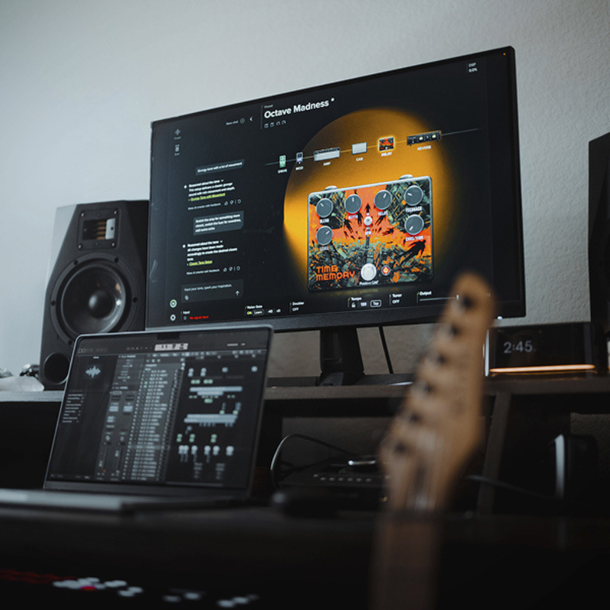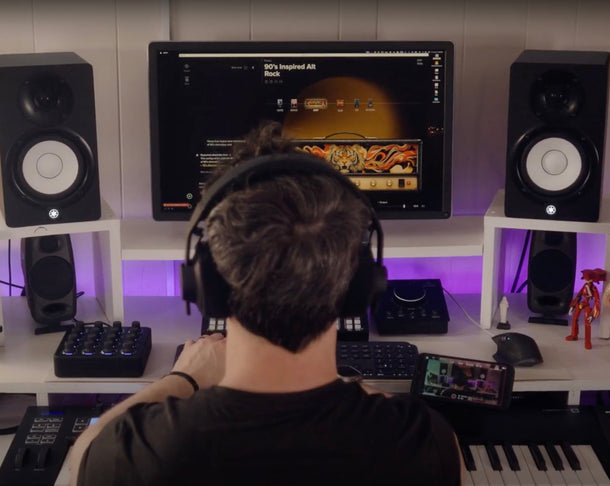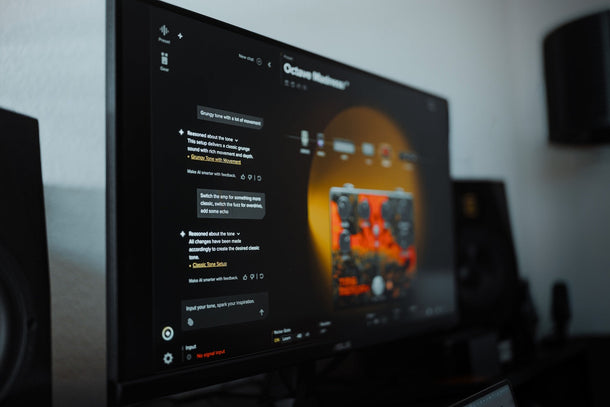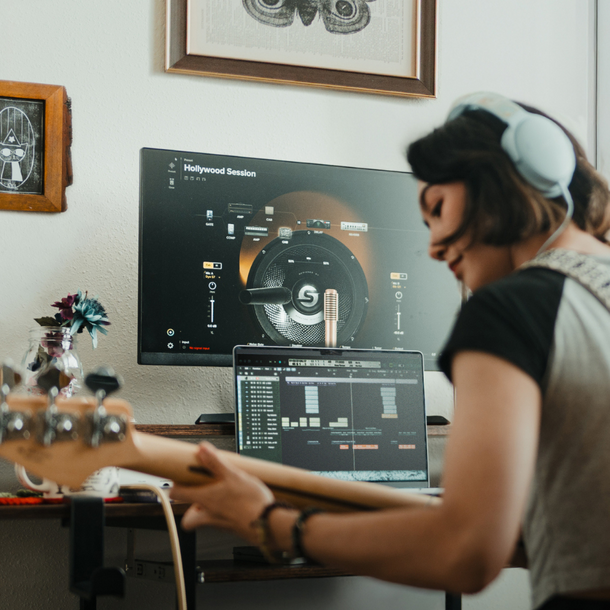- All categories
- artists
- BIAS FX
- buyersguide
- gear
- spark
 Spark 2 on Tour: A Backstage Essential for Three Days Grace
Spark 2 on Tour: A Backstage Essential for Three Days GraceOctober 23, 2025
Estimated Read Time: 3 - 4 Minutes. On tour, simple and reliable gear matters. Three Days Grace / Five Finger Death Punch guitar tech, Jeramy "Hoogie" Donais, works behind the scenes to keep the band’s massive rock tone locked in every night. One of the tools he now keeps in his daily setup is Spark 2, a compact amp that’s become part of his backstage workflow for fast tone checks and quick idea building. We asked him how Spark 2 fits into life on the road.
Read more 5 Ways Spark LINK XLR Makes Gigging Simpler for Singers & Performers
5 Ways Spark LINK XLR Makes Gigging Simpler for Singers & PerformersOctober 23, 2025
Estimated Read Time: 3 - 4 Minutes. We get it—the most cumbersome part of any live performance (or even a casual band practice) is the setup. 99% of us don’t have road crews, so we’re dragging in our own gear, untangling cables, and trying to figure out why half of them are too short or frayed. Meanwhile, your singer wants to move across the stage without turning it into a rodeo of tripping hazards.
Read more How Going Wireless Transforms Your Vocal Performance
How Going Wireless Transforms Your Vocal PerformanceOctober 09, 2025
Estimated Read Time: 2 - 3 minutes. Wireless mics have been around for ages, but until now they’ve been pricey, complicated, or required you to buy an entirely new mic system. With Spark LINK XLR, you don’t need to start over. You can take the microphone you already trust (yes, even that tank of an SM57) and make it wireless in seconds. No bulky receivers, no special mixers, no endless setup menus. Just plug in, pair, and you’re ready.
Read more Customizing Your Tone for Different Genres Using BIAS X
Customizing Your Tone for Different Genres Using BIAS XOctober 04, 2025
Estimated Read Time: 2 - 3 minutes. One of the best ways to grow as a guitarist is to step outside your usual genre. Listening to and experimenting with different styles of music opens up new creative doors. You might find yourself pulling the raw energy of punk into a blues lick, or sprinkling jazz-inspired chords into a heavy metal riff. Blending genres is how new sounds are born.
Read more How to Create Your Own Signal Chain in BIAS X
How to Create Your Own Signal Chain in BIAS XSeptember 24, 2025
Estimated Read Time: 2-3 minutes. Ever imagine what it would be like to sit in front of a massive wall of amps and pedals, free to try every combination, order, sound, and setting without limits? For a lot of us, that dream started at the local guitar store—gazing at glass cases full of pedals we couldn’t afford and wondering how they’d sound together.
Read more Tips for Prompting the AI in BIAS X
Tips for Prompting the AI in BIAS XSeptember 24, 2025
Estimated Read Time: 3-4 minutes. Let’s face it: “AI” has been slapped on everything these days, from toothbrushes to toasters. But here’s the thing— the AI in BIAS X isn’t about replacing you, your ideas, or your creativity. It’s about amplifying what you already bring to the table. Instead of wasting hours scrolling through endless tone settings, you can use words or even sounds themselves to get exactly where you want to go. Think of it as a creative sidekick that clears the technical clutter so you can stay focused on what matters: playing and creating.
Read more The Science Behind BIAS X
The Science Behind BIAS XSeptember 19, 2025
Estimated Read Time: 3-4 minutes. There are plenty of guitar plugins out there and you’ve probably tried a few. But BIAS X isn’t just another modeler with shiny knobs. At its core, yes, it’s guitar software and a plugin for players, producers, and engineers of all levels. You can use it for recording, practicing, jamming, even performing. But the secret sauce is what’s happening under the hood: a new kind of AI-driven science that makes creating tones faster, easier, and more inspiring than ever.
Read more BIAS X Beginner’s Guide
BIAS X Beginner’s GuideSeptember 19, 2025
Estimated Read Time 3-4 minutes. So, you’ve just bought and installed BIAS X, guitar in hand. Now what? Don’t worry—you don’t need to be an audio engineer to get started. BIAS X was designed to make great tone immediate and intuitive.
Read more